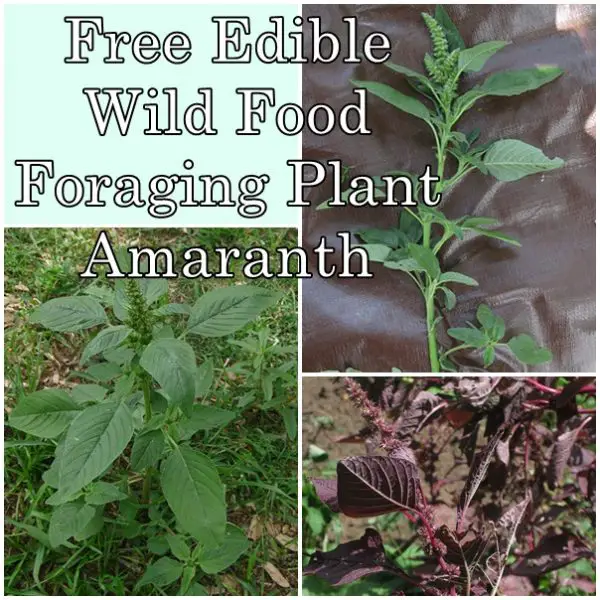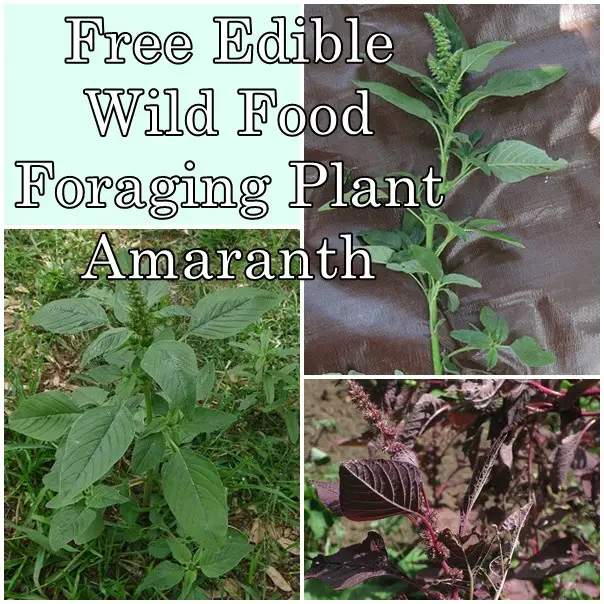Look at this fabulous free edible wild food foraging plant “Amaranth” is yet another way to add variety to your family’s diet safely. This is what is at the heart of a concept called foraging and it could literally save your life in an emergency situation, such as a natural disaster – or reduce your monthly grocery budget.
Having this kind of knowledge can save your family is hard times arrive. While other families are starving, your family will survive. Let’s pray this never happens !

Make sure you like The Homestead Survival on Facebook, Shop AMAZON with Us and explore our PINTEREST BOARDS for innovative ways you can become self-sufficient on a budget.
If you were to find yourself stranded in the middle of nowhere and no idea where you are, would you be able to find food to survive on until you were able to get home? While this may never happen to you, but you never know. This would be one of those times that a little knowledge of wild plants could actually save your life.
Scientific name: Amaranthus spp.
Abundance: common
What: young leaves, seeds
How: Young leaves raw or cooked, seeds eaten raw, roasted or ground into flour
Where: sunny fields, disturbed areas
When: summer
Nutritional Value: Grains supply protein, calories, and minerals. Leaves vitamins A & C along with minerals calcium, iron, and phosphorous, and also fiber.
The most distinctive feature of all amaranths is their spikes of tiny, clustered flowers which are the same color as the rest of the plant. Amaranths are most commonly found in sunny, disturbed areas and wastelands such as abandoned lots and roadsides.
Amaranth leaves can be eaten raw or used as a spinach substitute in any dish. The leaves are high in vitamin A & C, assorted necessary minerals and also fiber. The youngest leaves have the best flavor and texture, but even the large, old leaves can be chopped up and included in any food needing a vegetable.
Amaranth seeds are very rich in carbohydrates and up to 16% protein by weight. Better still, the seeds contain the amino acid lysine which is very rare for plants but vital for human health. A single plant can produce as many as 100,000 of these wonderful, slightly nutty-tasting seeds. They can be eaten raw but toasting and then grinding into flour releases the most nutrition.
While this article covers a particular wild plant, the ideas and methods discussed in it can be used in most all situations. The Amaranth plant is just one of many edible wild plants that grow in an abundance throughout many states of the United States of America.
Wild plants often contain similar nutritional values and uses that are commonly associated with cultivated food crops found on today’s farms. The key is being able to identify them and prepare them properly.
Benefits of reading “Free Edible Wild Food Foraging Plant Amaranth” article
● Learn to easily identify an emergency source of food to sustain you
● It discusses what characteristics that you can use to quickly spot the plant
● It has numerous full color photos to make it easier to distinguish between other wild plants
Click here to read about Free Edible Wild Food Foraging Plant Amaranth:
http://www.eattheweeds.com/palmer-amaranth/
[amazon-related-products keywords=”Amaranth”]


